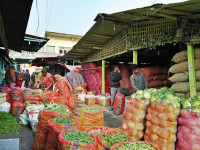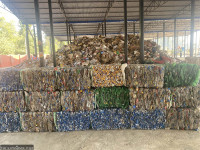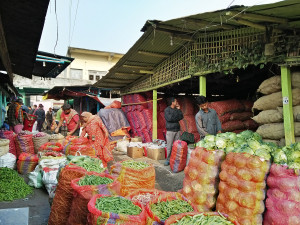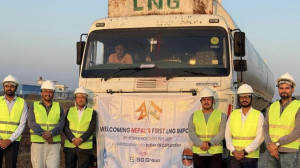Money
Bhairahawa revs up as investors’ hub
Bhairahawa is poised to transform itself into one of Nepal’s largest tourism and industrial hubs with investors and the government pouring billions into infrastructure development.
Madhav Dhungana
Bhairahawa is poised to transform itself into one of Nepal’s largest tourism and industrial hubs with investors and the government pouring billions into infrastructure development.
The once sleepy market town in the Tarai plains was thrust on to the international stage after becoming the gateway to the pilgrimage destination of Lumbini. Proliferating factories and a rapidly spreading transportation network have turned Bhairahawa into an economic powerhouse.
Lumbini, which attracts international pilgrims as the birthplace of the Buddha, has observed the construction of large-scale infrastructure—international airport, industrial corridor, trade highways and a bevy of luxury hotels.
At least half a dozen five-star properties are under development. Six years ago, hotel entrepreneur Chandra Prakash Shrestha spent Rs400 million to build a three-star property, the Hotel Nans. He is now developing another plush hotel, a five-star property named Nans 2. The estimated cost of the new project is Rs700 million.
“The investment environment has improved here,” Shrestha said. The rapid development of infrastructure in Bhairahawa, Lumbini and Butwal are the major drivers luring him to invest more. “Among the many sectors, the hospitality industry seems to have a good future here.”
Meanwhile, Silver Heritage, Asia’s leading gaming operator, is investing Rs3 billion on the construction of a five-star property named Tiger Palace at Chilhiya near Bhairahawa. The Bodhi Red Sun Hotel at Basantapur, Bhairahawa is upgrading itself into a five-star property.
Another five-star property, Pawan Palace, is under construction in Lumbini. Likewise, Asian International Regency is building a hotel at Buddha Chowk while the Yeti Group is planning to erect a luxury property in Lumbini.
Besides the booming hospitality sector, manufacturing industries have been making rapid strides in the region. The area has now become the first choice for investors, said traders.
In a short span of time, more than four dozen big factories have been established in Bhairahawa. Foreign and domestic investors have injected more than Rs11 billion in the cement industry. The Bhairahawa-Parasi stretch has become an industrial corridor.
Meanwhile, the government is planning to acquire 800 bighas of land to establish the Motipur Industrial Corridor. One of the major infrastructure development projects in the area is the upgradation of Gautam Buddha Airport into an international airport.
It is expected to come into operation by 2017 and serve Buddhist pilgrims who want to visit Lumbini, the birthplace of the Buddha. After completion, the airport will be Nepal’s second international air gateway.
The government has also formally started work to develop the Greater Lumbini Buddhist Circuit to promote Buddhist tourism.
The plan aims to foster pilgrimage tourism and offer better facilities to pilgrims to help boost tourist traffic and length of stay.
According to the Ministry of Culture, Tourism and Civil Aviation, the planned 160-km Buddhist Circuit will incorporate 10 major Buddhist sites, including Kapilvastu, Devdaha and Ramgram.
Lumbini is a potential world-class tourist destination for 500 million Buddhists in Asia. It hosts the birthplace of the Buddha and over 100 related archaeological sites scattered within a 50-km radius.
Under the Greater Lumbini Buddhist Circuit project, Nepal aims to link the region with the Buddhist Circuit in India and other regional tourism destinations like Chitwan, Pokhara, Bardia and the northwestern mountains.
The construction of a six-lane Belhiya-Butwal trade road, special economic zone and a number of roads has transformed the area into a modern industrial city.




 8.12°C Kathmandu
8.12°C Kathmandu















